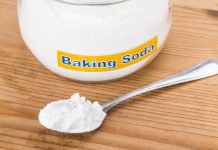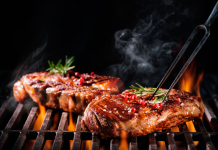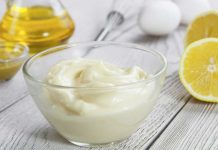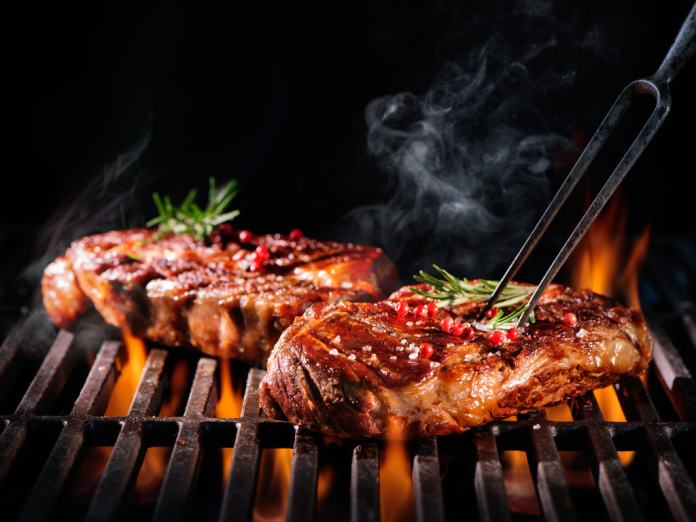While the adoration for hamburgers is far-reaching across the U.S., with Americans eating five steaks each month by and large, feelings vary on how a steak is best delighted in. In May 2016, Longhorn Steakhouse gathered information across their 491 areas to decide how Americans like their steaks cooked. It would seem 2.5% favor their steaks interesting, 22.5% decide on seared to perfection, 37.5% pick medium, 25.8% request medium-well, and 11.7% partake in a thoroughly cooked steak (per Saying). With such generally varying feelings, most would agree that an impeccably cooked steak is something emotional.
While the level of cooking a steak will and consistently ought to be easily proven wrong, how it is cooked ought to be a training grounded in realities. However, there are numerous fantasies encompassing the appropriate methods used to create the best outcomes. Peruse on as we expose the most widely recognized legends encompassing the method involved with cooking steaks.
Misconceptions: Steak ought to be raised to room temperature prior to cooking
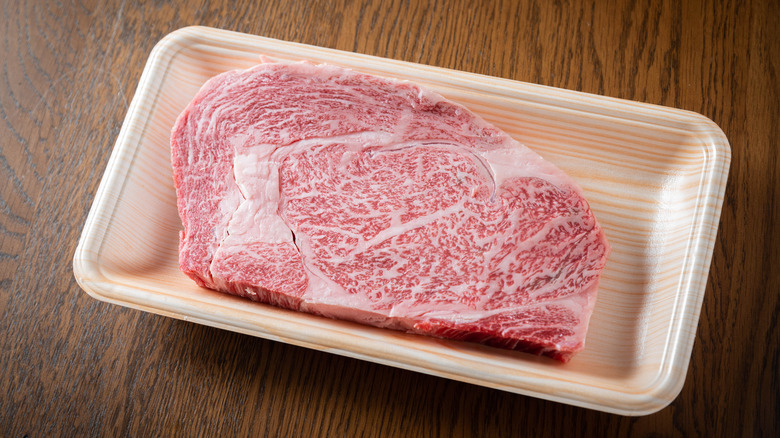
Maybe one of the most productive fantasies with regard to cooking steak is the possibility that the living temperature preceding cooking should be brought. This is shown by the number of conspicuous industry experts who declare by the training, for example, Alain Ducasse, a French gourmet specialist with Michelin stars. The point of view behind bringing steak up to room temperature is that it will guarantee it cooks equitably.
Conflicting with the assessments of such regarded individuals in the culinary business is an overwhelming possibility. Nonetheless, a trial by Cook’s Shown found that steaks removed from the ice chest for a couple of hours just experienced minor temperature increments. Moreover, the steaks were found to have no perceptible contrasts in taste, surface, or appearance when contrasted with ones cooked directly from the cooler.
It means quite a bit to take note that meat ought not to be left at room temperature for over two hours or one hour on the off chance that the temperature is over 90 degrees (per the US Branch of Horticulture). Assuming that meat is left unrefrigerated for a really long time, quite possibly risky degrees of unsafe microscopic organisms will expand on it.
Misconceptions: Filet mignon makes the best steak
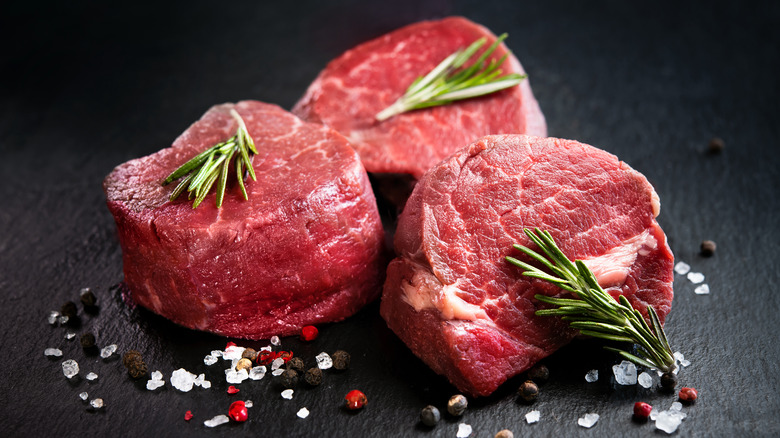
As revealed by Connection points, numerous customers accept that an excessive cost point shows that an item is better than less expensive other options. In the culinary world, we most often partner this peculiarity with top-of-the-line items like wine (per The Global Diary of Showcasing Studies). In any case, meat is the same, and this is particularly evident with regard to steak. An exemplary illustration of this is filet mignon, which is one of the most costly cuts of hamburgers. This cut is little, lean, and unimaginably delicate. While this might be attractive for certain dishes, an absence of intramuscular fat — known as marbling — implies filet mignon can be dull, textureless, and dry, as revealed by Thrillist.
In correlation, less expensive, fattier cuts of meat demonstrate infinitely better taste and surface. Addressing Thrillist, gourmet specialist and proprietor at Blackbelly Hosea Rosenberg featured a cut he incredibly likes. “The Denver is a truly astonishing and reasonable cut,” he said. “It’s tracked down on the hurl, is very much marbled, and has no connective tissues or fat covers to arrange. Simply flavorful, firm steak that can be barbecued, broiled, or singed to an ideal seared to perfection for around 25% of the expense of a ‘top notch’ cut of steak.”
Misconceptions: A steak should be singed to secure in its juices
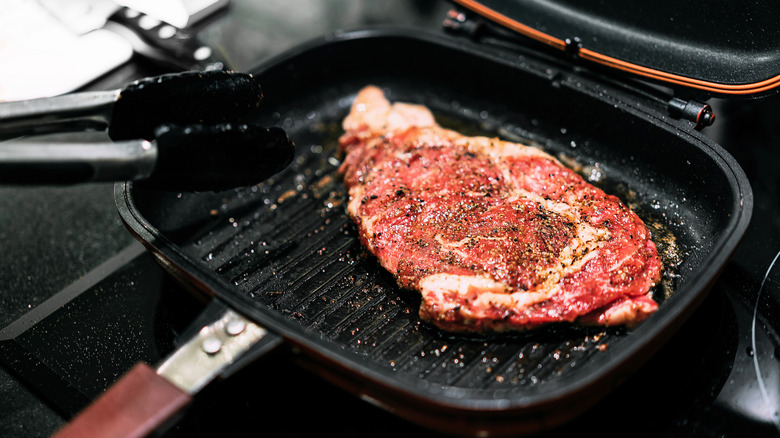
Burning is a significant step with regards to cooking a steak as it makes a brown, finished hull. In any case, this cycle is likewise the wellspring of another famous gastronomic legend, which is that burning is the best way to secure the meat’s juices. This thought is misleading, as exhibited by a review distributed in the Diary of Culinary Science and Innovation, which saw as singing to affect a steak’s dampness maintenance.
A superior method for securing the meat’s juices is to switch burn it. With this strategy, the meat is heated in the broiler and afterward burned in a dish in the oven (per Masterclass). This approach guarantees even, delicate cooking happens, which limits the deficiency of dampness, as announced by Preliminary Magazine. In a meeting with the distribution, gourmet specialist and restaurateur David Gaus made sense of that “a great deal of expert kitchens have changed to switch burning since they’re seeing a more reliable item.”
Misconceptions: The best way to cook a steak is with direct intensity
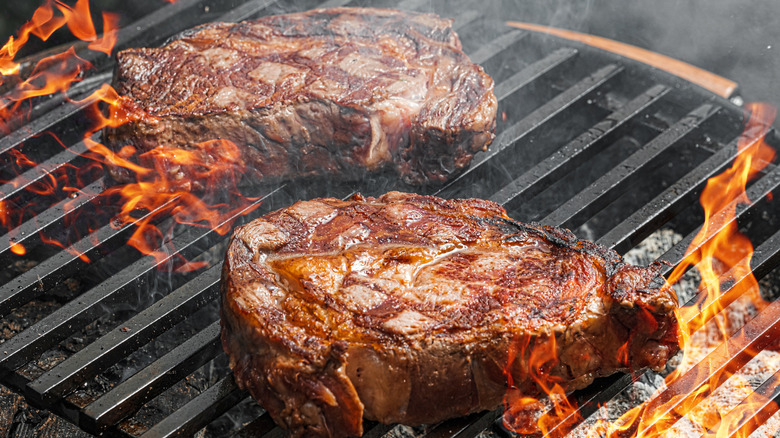
At the point when you consider cooking a steak, you probably picture somebody putting a section of meat on a flaring hot barbecue or sliding it in a searing skillet. While these conventional techniques are completely reasonable ways of cooking steak, they are not really awesome.
Sous vide is a cooking method that includes vacuum pressing food prior to lowering it in warm water for significant stretches. This strategy for cooking doesn’t utilize an immediate intensity source and results in an impeccably cooked steak. Sous vide works in light of the fact that the water’s encompassing intensity gradually bring the whole slice of meat up to temperature without overcooking the edges. Nonetheless, while cooking steak with backhanded heat sources, burning it in a hot dish prior to serving is significant. As revealed by Anova, this makes the steak look more engaging as well as makes the indispensable flavor and the textural contrast between the edge of the steak and its inside.
Misconceptions: A steak ought to just be flipped once
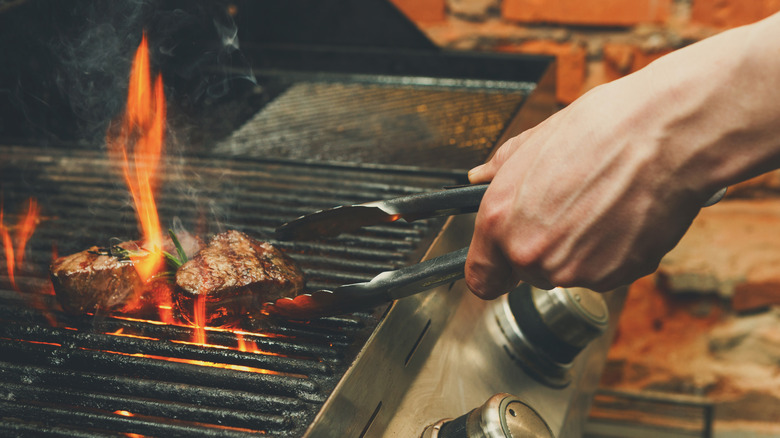
Many individuals are deluded into feeling that once the steak is placed on the barbecue or in the skillet it ought to just be flipped once to forestall dampness misfortune and make the ideal outside. While this method might create stylishly satisfying barbecue denotes, it’s not the most ideal technique while cooking steak.
Creator and food writer J. Kenji López-Alt reports that flipping steak “like clockwork or somewhere in the vicinity” is an infinitely better procedure that outcomes in “a hull that is comparable.” Culinary expert Heston Blumenthal concurs with the idea of more successive flipping as he noted in a meeting with PerthNow. “This is the key thing: flip your steak each 10-15 seconds,” he said. “Customarily, you complete two minutes on one side, two minutes on the other and you get a decent earthy colored piece of steak, However in the event that you like a pleasant hull outwardly and for it to be pink in the center, simply continue to flip it.”
Misconceptions: Treating with margarine is ideal
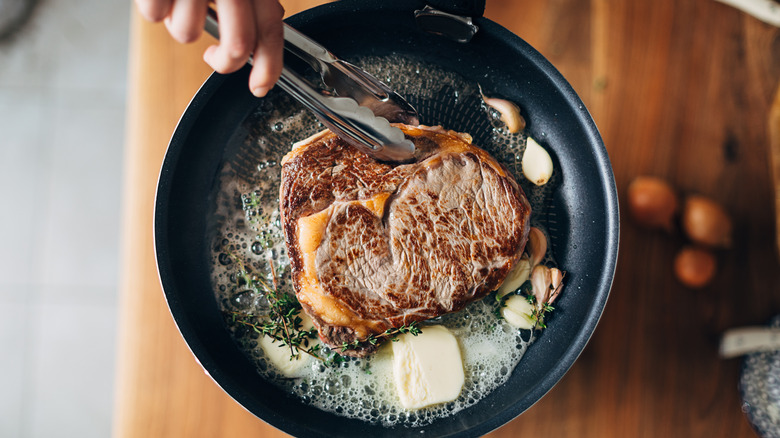
Skillet seasoning is a method that utilizations dissolved fat to confer flavor and add to the cooking system. Spread, by and large, is the fat utilized most frequently to season steak. In any case, margarine isn’t the tastiest type of fat accessible, and there is a developing agreement that creature fat, like fat or drippings, ought to be utilized to treat meat all things being equal.
Hamburger drippings are made when the fat melts off the meat during the cooking system. The drippings are gathered and cooled until they achieve a strong, margarine-like consistency. While singing a steak, the hamburger drippings can be utilized to season it, which grants enormous measures of flavor to the meat. Furthermore, on the off chance that steak is cooked utilizing the opposite burn strategy, drippings can be gathered from the skillet during the broiler simmering process and used to season it.
Misconceptions: Don’t puncture steak while cooking
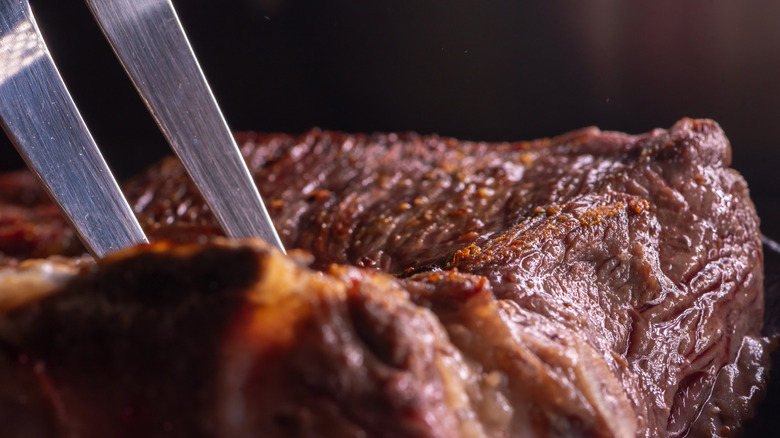
With regards to appropriately cooking steak, there is an emphasis on limiting dampness misfortune in the interim. Nonetheless, a portion of the manners in which we look to limit a steak’s dampness misfortune is off track. A perfect representation of this is that penetrating any kind of opening in the meat will permit every one of the juices to spill out and leave the steak dry.
So inescapable is this misinterpretation that Cook’s Shown directed a trial to test the hypothesis. While cooking two steaks, they flipped one with utensils and the other one by puncturing it with a fork. They then gauged the steaks and found that the meat had a similar dampness content. The distribution reasoned that puncturing the meat doesn’t harm filaments enough to drive the juices out. “With regards to the dampness level and delicacy of meat, cooking time and temperature are the main factors,” the power source made sense of.
Misconceptions: The jab test will let you know when the steak is finished
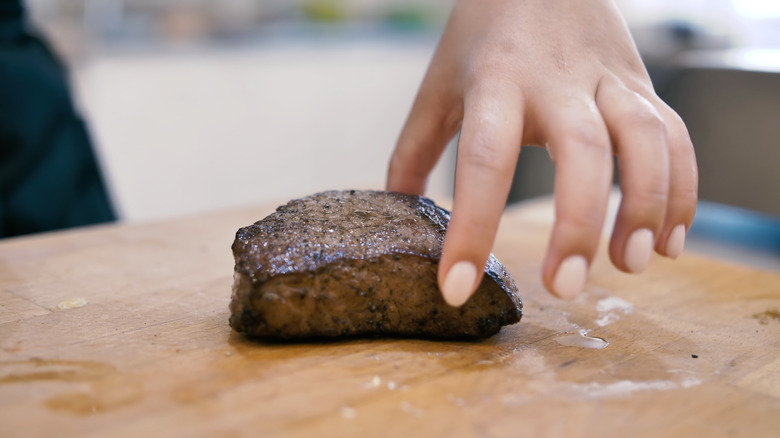
The jab test is many home cooks’ #1 stunt. It includes looking at the immovability of a cooked steak to the meaty piece of your thumb to decide the degree of doneness.
The thought behind this technique is that the immovability of the beefy piece of your thumb looks like an intriguing steak when the hand is loose, a medium steak when the thumb and pointer contact, etc as you progress through your fingers.
Tragically for the people who love the basic idea of this strategy, a review distributed in The Clinical Diary of Australia observed that the exactness of this method was low. The members just sorted the steak accurately 36% of the time, despite the fact that it ought to be noticed that the review was performed on novice cooks, and accordingly, the exactness of this strategy might vary for experts.
With modest and exact meat thermometers generally accessible, there is no requirement for rough approximations to be made by means of the questionable jab test. Rather, the inside temperature ought to be taken and the outcome contrasted with temperature guides.
Misconceptions: Just season a steak in the wake of cooking
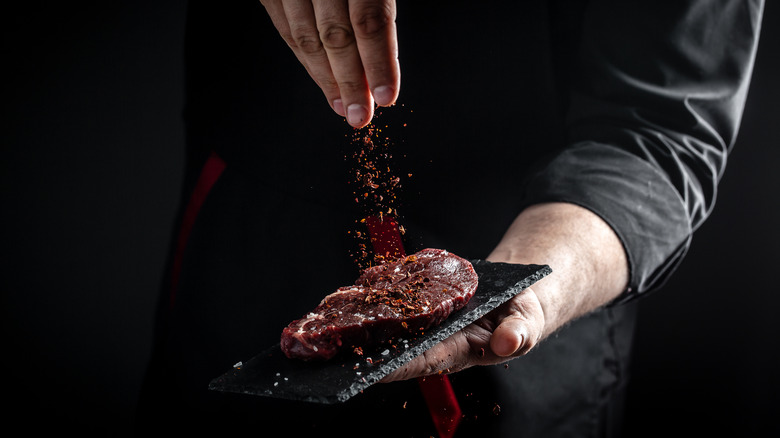
The ideal opportunity to prepare a steak is a disputed matter and has separated numerous gourmet experts. In any case, the possibility that steak ought to just be prepared after it’s done cooking is an off-track one that can adversely influence the meat.
Salt flavors steak as well as adds to the improvement of a sautéed outside. An overabundance of dampness on the outer layer of the meat prompts dissipation happening when it comes into contact with the container. This keeps the Maillard response from occurring and can demolish the singing system.
Salting a steak and permitting it to rest prior to cooking — a strategy known as dry tenderizing — assists with drying the outside of the meat. Through the course of assimilation, the salt coaxes dampness out of the hamburger. This fluid is then reabsorbed, sucking all the dampness back into the filaments and leaving the outside discernibly drier. This cycle likewise permits the steak to hold more dampness while cooking, as Max Grebb. At the point when you’re dry tenderizing a steak, he makes sense of, all that salt that has been completely consumed by the actual meat ties to those particles, making it harder for water to get away and eventually further developing dampness maintenance inside those cells.






















